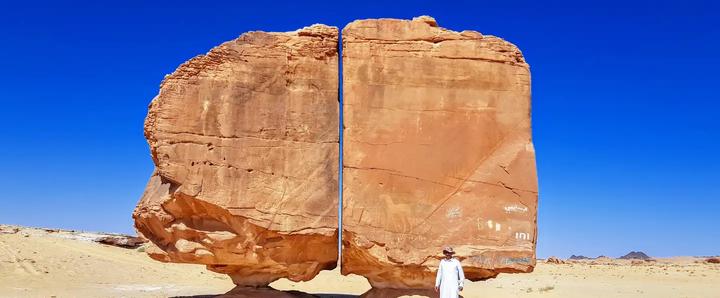Scientific Explanations for Natural Phenomena: Beyond Common Misconceptions
This article examines several natural phenomena that are often considered unexplainable by science but have actually been well understood through scientific research, focusing on geological formations, minerals, and artifacts.

The Al Naslaa rock formation in Saudi Arabia represents one of the most fascinating examples of how natural phenomena that appear mysterious can be explained through scientific understanding. This remarkable split rock, standing 9 meters long and 6 meters high, features an incredibly straight vertical break that has led to widespread speculation about ancient lasers or extraterrestrial intervention. However, geologists have demonstrated that this perfect split results from natural joint systems and weathering processes.
The formation developed through a series of specific geological events. The sandstone first formed under ancient oxidizing conditions in the Arabian Peninsula. Later, regional tectonic stresses created joint systems, with the principal stress axis oriented 45 degrees to the fracture surface. The remarkably straight split occurred along these natural joint planes, while wind erosion shaped the distinctive top-heavy “mushroom rock” appearance.
This scientific explanation is supported by multiple lines of evidence. Similar joint patterns appear in surrounding rocks, and the surfaces show characteristic features of natural joint formation rather than artificial cutting. The rock’s surfaces display plumose structures - natural markings that would not be present in artificially cut stone.
The phenomenon of natural joint systems extends far beyond Al Naslaa. Similar formations can be found worldwide, from the checkerboard beaches of Tasmania to various locations in China. These examples demonstrate how systematic geological processes can create seemingly impossible geometric patterns in stone.
The topic of meteorite diamonds provides another example of scientific explanation replacing mystery. While genuine impact diamonds exist, they typically occur as nanocrystalline structures rather than large gemstones. These diamonds form under the extreme pressures and temperatures of meteorite impacts, but their size and structure make them more suitable for industrial applications than jewelry.
Additionally, the article examines the formation of natural pearls. While often shrouded in mystical explanations, their development is well understood as a biological process involving calcium carbonate deposition around an irritant. Most commercial pearls today are cultured, though natural pearls do form through this documented process.
These cases illustrate how careful scientific investigation can reveal the natural mechanisms behind seemingly inexplicable phenomena. While the processes may be complex, they follow understandable physical and chemical principles rather than requiring supernatural or extraterrestrial explanations. This understanding enhances rather than diminishes appreciation for these remarkable natural formations.
The examples also demonstrate the importance of distinguishing between genuine scientific mysteries and phenomena that already have solid scientific explanations but remain poorly understood by the general public. By exploring these cases, we can better appreciate how scientific research continues to illuminate the natural world’s most intriguing features.